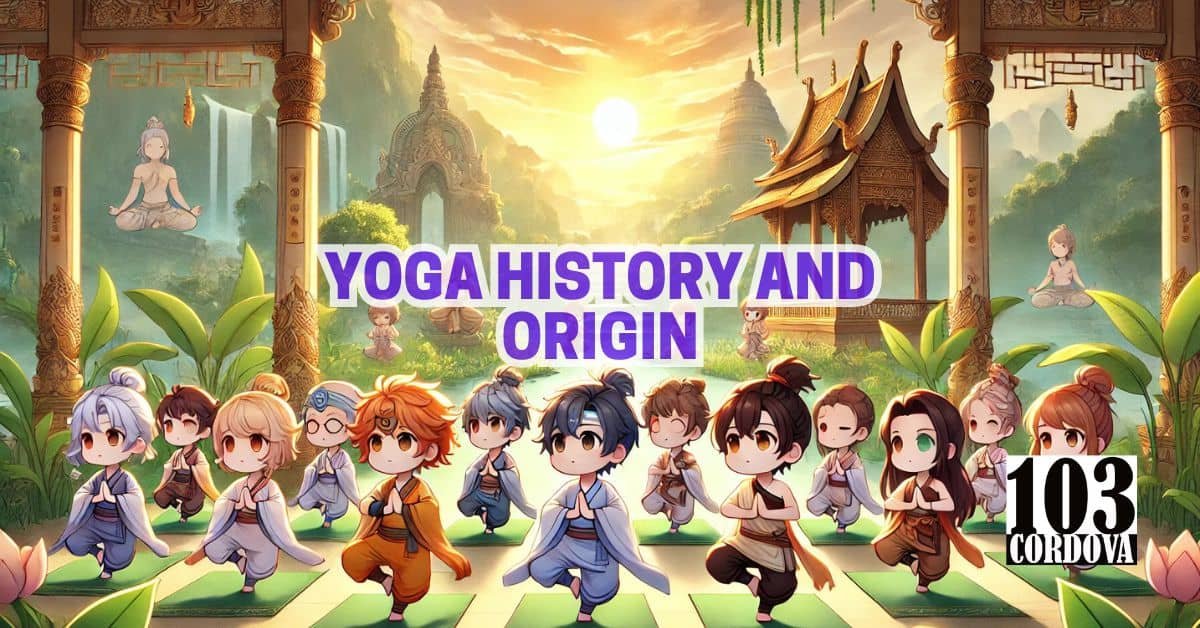Yoga, an ancient practice, has been part of human culture for over 5,000 years.
It began in ancient India, where it served as a spiritual path for self-discovery and enlightenment.
The practice combined physical movements, mental focus, and spiritual reflection to help people connect with a higher purpose.
Over centuries, it grew beyond its religious origins, spreading across the world.
Understanding its history reveals how yoga evolved from a sacred ritual to a modern lifestyle practice.
1. Understanding the Definition of Yoga
“Yoga” comes from the Sanskrit word “yuj,” meaning union or integration.
It emphasizes the connection between body, mind, and spirit, aiming for harmony in all aspects of life.
Yoga involves more than physical exercises; it includes breathing techniques, meditation, and ethical living.
Different traditions interpret this union in various ways, from spiritual awakening to personal well-being.
By practicing yoga, individuals seek to align their inner and outer worlds.
🧘 What is Laughter Yoga? Discover the Joyful Blend of Laughter and Wellness
2. Historical Context: The Emergence of Yoga in Ancient India
The earliest signs of yoga appear in the Indus Valley Civilization around 3000 BCE.
Ancient seals and artifacts show figures in meditative poses, suggesting early forms of yoga practice.
These practices were likely part of rituals to honor nature and seek spiritual guidance.
Over time, yoga became more structured, especially as it was influenced by the Vedic traditions.
The early foundations of yoga were deeply spiritual, focusing on achieving inner peace and understanding the universe.
🧘 Hot Yoga for Beginners: Hydration and Nutrition Tips for Optimal Performance
3. Significance of Sacred Texts in Yoga
Sacred texts such as the Vedas, Upanishads, and the Bhagavad Gita contain foundational teachings of yoga.
The Upanishads introduced key concepts like the connection between the self and the universe.
The Bhagavad Gita, a dialogue between Prince Arjuna and Lord Krishna, outlines different paths of yoga, including devotion and disciplined action.
These texts emphasized yoga as a way to achieve spiritual wisdom and liberation.
They remain central to understanding the philosophical underpinnings of traditional yoga practices.
🧘 What Is The Best Time To Do Yoga? Tips for Finding Your Ideal Practice Time
4. Exploring Patanjali’s Eight Limbs of Yoga
Patanjali, an ancient sage, organized yoga philosophy in his Yoga Sutras, offering a clear structure for spiritual growth.
He described the Eight Limbs of Yoga, which provide a step-by-step guide to achieving a balanced and meaningful life.
These include ethical principles (Yamas), personal disciplines (Niyamas), physical postures (Asanas), and breath control (Pranayama).
The final four limbs focus on mental refinement: sensory withdrawal (Pratyahara), concentration (Dharana), meditation (Dhyana), and ultimate bliss (Samadhi).
Together, these limbs form a holistic framework for personal and spiritual transformation.
🧘 Understanding the Difference Between Hatha Yoga and Ashtanga Yoga: Which Is Right for You?
5. Different Schools of Yoga and Their Philosophies
In time, several schools of yoga emerged, each emphasizing different aspects of the practice.
Hatha Yoga focuses on physical postures and breath control to prepare the body for meditation.
Bhakti Yoga centers on devotion and love for a higher power, fostering emotional connection.
Karma Yoga emphasizes selfless action, teaching practitioners to perform duties without attachment to results.
Jnana Yoga is the path of wisdom, encouraging deep inquiry into the nature of the self and reality.
🧘 Discover the Benefits of Halasana Yoga in Your Routine: Transform Your Health
6. The Influence of Hinduism and Buddhism on Yoga
Hinduism and Buddhism played crucial roles in shaping yoga’s development.
Hindu scriptures provided the spiritual context, framing yoga as a path to enlightenment and liberation (moksha).
Buddhism introduced practices like mindfulness and compassion, which became integral to many yoga traditions.
Both religions view yoga as a way to transcend worldly suffering and attain inner peace.
Despite their differences, they share a common goal: achieving harmony between the individual and the universe.
🧘 Incorporating Yoga to Lower Blood Pressure into Your Daily Routine
7. The Relationship Between Yoga and Meditation
Yoga and meditation are closely linked, with meditation serving as a core component of many yoga practices.
While yoga prepares the body and mind, meditation fosters deep focus and calm.
This combination helps practitioners achieve clarity, reduce stress, and enhance self-awareness.
In traditional yoga, meditation is considered a tool to quiet the mind and connect with the deeper self.
Together, these practices support a balanced life and spiritual growth.
🧘 Yoga Benefits Mental Health: Understanding the Impact on Anxiety and Depression
8. Tracing the Evolution of Yoga Through Time
Yoga has evolved significantly since its early beginnings in ancient India.
Initially a deeply spiritual practice, it was passed down orally and later systematized in sacred texts.
During the Middle Ages, yoga expanded with the rise of Hatha Yoga, focusing on physical strength and energy control.
In the 19th and 20th centuries, influential teachers brought yoga to the West, where it gained popularity as a health and wellness practice.
Today, yoga continues to adapt, blending ancient traditions with modern lifestyles while retaining its core principles.
🧘 Integrating Meditation with Yoga to Relieve Stress: Techniques That Work
9. Key Historical Figures Who Shaped Yoga
Several key figures played essential roles in preserving and spreading yoga.
Patanjali systematized its philosophy in the Yoga Sutras, providing a foundation for future practices.
Swami Vivekananda introduced yoga to the Western world in the late 1800s, emphasizing its spiritual aspects.
T. Krishnamacharya, known as the “father of modern yoga,” trained many influential teachers and revived Hatha Yoga.
Their contributions ensured yoga’s growth from a regional practice to a global phenomenon.
🧘 Learn More About the Universe of Yoga
10. Modern Interpretations of Ancient Yoga Practices
In modern times, yoga has been reinterpreted to meet the needs of diverse communities.
Practices like Power Yoga and Vinyasa focus on fitness, while restorative yoga emphasizes relaxation and healing.
Although these forms differ from traditional approaches, they still draw inspiration from ancient methods.
Some practitioners aim to return to yoga’s roots, focusing on meditation and spiritual growth.
This variety demonstrates yoga’s flexibility and enduring relevance in today’s world.
🧘 Yoga Studio in Marikina City
💡 Conclusion
The history and origin of yoga reveal its profound connection to human well-being and spiritual growth.
From ancient India to modern studios, yoga has transformed while preserving its essential teachings.
Its practices continue to offer tools for self-improvement and inner peace.
By honoring its roots, we can better understand yoga’s timeless value.
As a practice, it bridges the past and present, enriching lives across cultures and generations.
🧘 Our Services
Experience the benefits of yoga with our expert-led classes for all ages at 103 Cordova Tower, Marquinton Residences, Cirma Street, Sto. Niño, Marikina City.
Whether you’re a beginner or an advanced practitioner, we offer personalized sessions to help you achieve balance and wellness.
Reach us at 09176225780, through our Facebook page, or via our website’s contact form.
Our welcoming environment ensures everyone feels comfortable and supported.
Start your journey to better health and a peaceful mind today!

